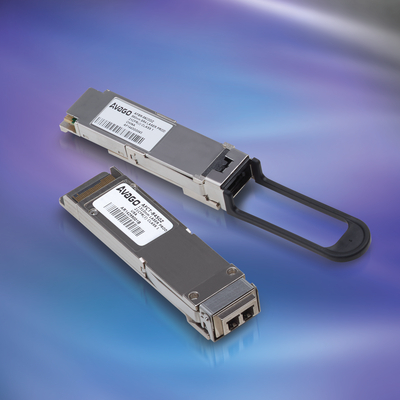The communications infrastructure has always relied on higher-speed communications links to allow aggregation of multiple lower-speed channels. The ability to combine several conversations and sessions from multiple sources to multiple designations has always been the backbone of central offices and communications hubs. Switching and routing gear started out as electromechanical contact-based step sequencers for analog traffic and has evolved to digital switching of digital information.
When digital T1 lines were put in place, the same or better quality of service was maintained at the end points. Central offices used subscriber line interface circuits (SLICs) to convert analog signals to and from the endpoints into the bit-oriented time division multiplexed higher-speed digital transmissions that could live on the same wire.
Using the same laid copper lines, communications providers could leverage the same media to achieve higher communications rates and traffic as each successive faster generation of aggregators, multiplexers, and de-multiplexers emerged and were put in service. When copper ran out of steam, fiber cables were laid and lit up as needed to handle the traffic. The same trend continued. As faster fiber transceivers emerged, they were put into service to provide more throughput for the telecom providers.
But something happened along the way. End users’ appetites for data grew, slowly at first, but then explosively as apps and services began providing larger data files, audio, and video. The old 64 Kbit/sec channels that Plain Old Telephone (POT) lines provided were just not enough. (Note – 56 Kbits/sec were the fastest data rates over these 64 Kbit/sec lines since the telecom providers used something called cycle stealing to pass signaling information over the same line. That’s why modems never got faster that 56 K.)
It is not uncommon to see service providers advertising faster speeds for Internet over both copper and fiber. Even wireless links are advertising 100 Mbit/sec data rates even though this is an unsustainable burst at best. But end users only care about lag time and large data sets influence this. And, between multiple applications running simultaneously using audio and video streams in and out, each endpoint is becoming its own little mini central office where it multiplexes and de-multiplexes multiple sources and destinations through a single pipe.
How far can this go? That is unknown. If holographic imaging systems become popular, the amount of data will exponentially rise again for both home entertainment and signage. Our need for more data throughput is sure to increase as the Internet of Things (IoT) connects more devices to networks. This includes sensors for law enforcement and Big Brother, as well as seismic monitors, wave heights, bird migration patterns, and on and on.
To make this work, higher-speed lines are needed throughout the entire system all the way to the endpoints. With facility space and power limitation, higher-speed modules that use the same form factor as older slower-speed modules are in an ideal position, allowing incremental updates to boost performance levels.
As higher speeds trickle down the infrastructure, homes and businesses will see more last-mile fiber again, with chronologically incrementing data rates.
Fortunately, there are more dark fibers already in place ready to light as the need arises. This provides long-haul throughput to main distribution nodes. This means the big push will be to upgrade the last few hops to increase performance end- to-end.
That is why the beginning of production of the new 100 G modules from Avago is significant. This next-level performance will allow data centers to leverage this to achieve higher speed and more traffic in the same physical space. As production ramps up, expect to see these higher-speed modules reach close to parity with the older ones, which can be repurposed for remote switching stations that handle less traffic.
 Figure 1: At last, production versions of the Avago 100 G modules are now able to increase communications traffic and speed using the same infrastructure. (Source: Avago Technologies)
Figure 1: At last, production versions of the Avago 100 G modules are now able to increase communications traffic and speed using the same infrastructure. (Source: Avago Technologies)
By: Jon Gabay
Advertisement
Learn more about Avago Technologies





